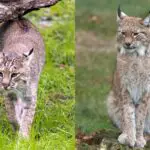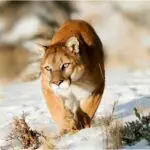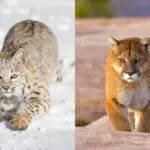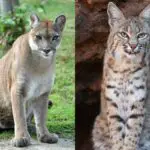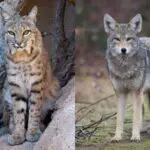Along with mountain lions, pumas, and cougars, bobcats and panthers share the incredibly vast North American territory.
This territory stretches as far as northern Canada, south of Alaska, and as south as Mexico.
Both are extremely beautiful species of big and equally fierce, it isn’t hard to see why so many people easily mistake one species of cat for another.
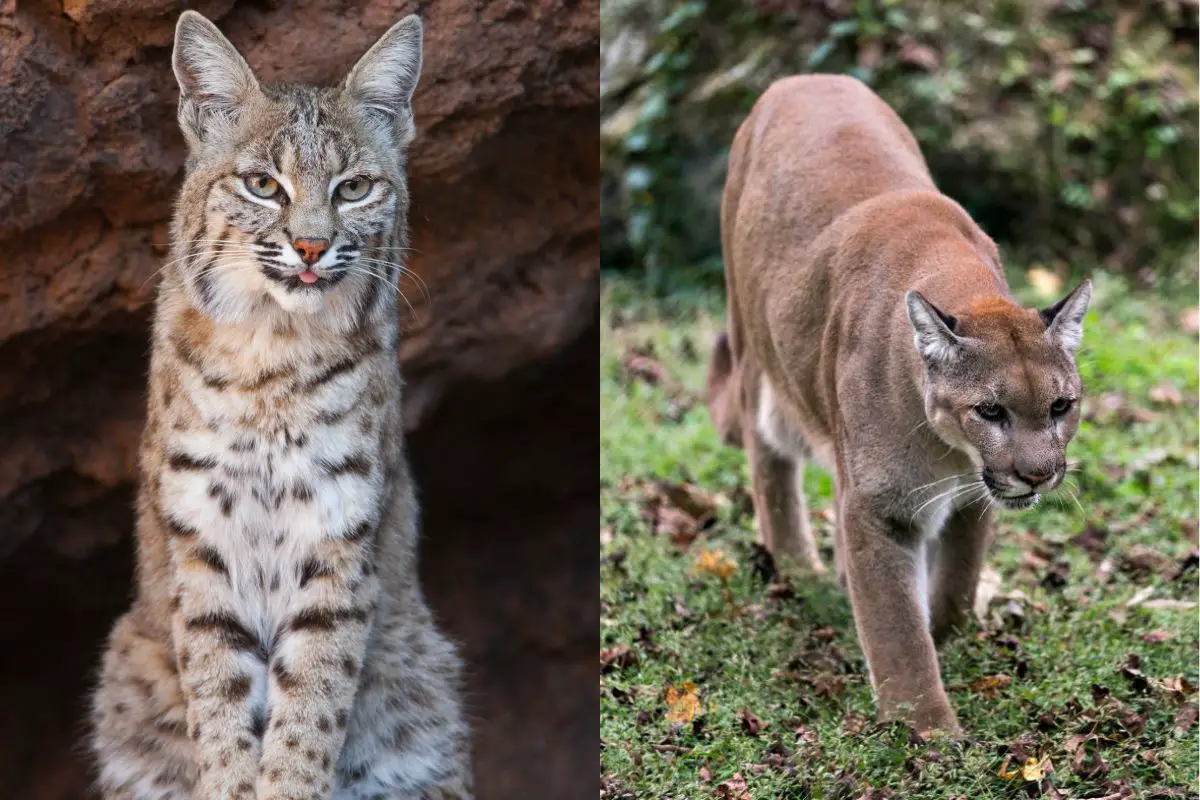
Having said that, there are definitely factors that separate the two species.
For starters, the bobcat belongs to the Lynx genus, while the mountain lion belongs to the Puma genus.
Despite both species being quite elusive, it’s not out of the question that you might have spotted one in the wild.
However, which species did you see? Without knowing the key differences between the species, knowing can be incredibly difficult.
Therefore, in this article, we’re going to compare the two species and show you the main differences. We’ll tell you everything you need to know!
Comparing Bobcat Vs Panther
Before we do anything else, we’d like to briefly compare the two species. We’ll then go into more detail, looking at the more specific differences between the two species.
The bobcat has a long speckled tan coat covered in brown spots. They have a short nub tail and long, pointy ears. Their ears are normally covered with a tuft of hair.
The panther also has a sandy tan-colored coat, but their fur tends to be sleek and short. Compared to the bobcat, the panther also has an incredibly large tail.
Much bigger than the bobcat, panthers usually hunt for bigger prey such as coyotes, elk, and bobcats. On the other hand, bobcats will usually hunt for smaller prey like squirrels and rabbits.
Despite the ability to hunt bigger prey, the panther’s territory across North America is much smaller than the bobcats. The panther can now only be found in the north, west, and southwest.
Size
When it comes to the main differences between bobcats and panthers, size is one of the biggest.
Panthers are a much bigger species of cat than the bobcat. In fact, the panther is the largest North American species of cat.
Panthers can reach lengths of approximately 60 inches long. This is without the length of its long tail. With its tail, the panther can reach lengths of 108 inches.
They can also weigh up to 136 lbs.
Only reaching lengths of 26 to 41 inches without its tail and up to 49 inches long with its tail, the bobcat is significantly smaller. The bobcat only weighs up to 30 lbs too.
While the bobcat may seem extremely small when compared to the panther, it’s worth noting that the bobcat is still twice the size of a domesticated household cat.
Maybe this just goes to show how big the panther is.
Speed And Movement
These two species of cat also vary a lot in terms of speed and movement. For starters, the bobcat can only reach a top speed of 34 mph.
In all fairness to the bobcat, this isn’t slow. However, when compared to the panther, it looks like nothing.
Panthers can reach a top speed of 58 mph. This is in most parts down to their much bigger body and longer, more powerful legs.
Despite both cats being relatively fast, they tend to both preserve their energy and move in a more clinical, stealthy way.
Bobcats will happily stalk their prey on foot for up to 7 miles if it means grabbing a meal without having to sprint.
Panthers are a little bit more impatient. They will quickly pounce on prey when they get a chance. Interestingly, they are also known to move differently from the bobcat.
Thanks to their leaping abilities, panthers can leap from trees to catch their prey. They can also jump 20 feet vertically. The bobcat can only jump roughly 12 feet.
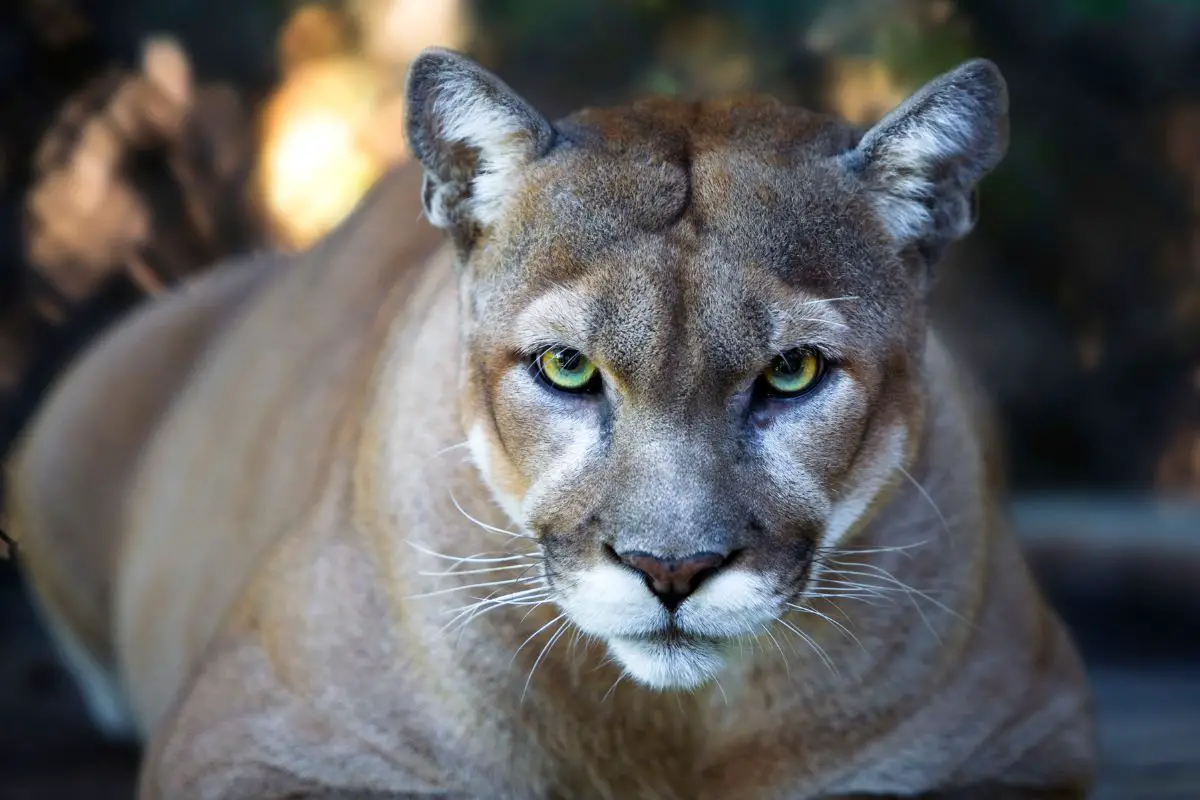
Bite Power And Teeth
Like most mammals, bobcats have incisors, canines, premolars, and molars.
Like most species of carnivorous wild cats, they also have distinct, super sharp, and extremely big teeth that make it much easier for them to kill their prey.
These sharp canines are designed to grab prey by the throat, suffocating them, or killing them instantly. Bobcats typically have 28 teeth in total. Four of these teeth will be sharp canines.
The bobcat has an extremely strong bite for its size.
At 548 newtons, the bobcat’s bite is actually stronger than the panther’s. The panther’s bite force is just 137 newtons.
Aside from that, panthers and bobcats have pretty similar teeth. The other difference between the two is that panthers usually have up to 30 teeth.
They will also use their canines to puncture their prey’s neck.
Senses
In regards to senses, the bobcat and panther aren’t much different.
Both species of big cats have excellent eyesight and incredible hearing capabilities. On top of that, they both have an impressive sense of smell.
Both species of cats will use these senses to help them catch prey easily.
One major difference between the two cats is that the bobcat’s eyes shine a bright yellowish-white color at night, whilst panthers will glow a brighter yellow color.
It is generally believed that the panther has better senses than the bobcat, especially when it comes to the sense of smell.
This is one of the reasons why the panther has a much bigger territory as they can pick up scents from further away.
Physical Defenses
Both the panther and bobcat are pretty good at defending themselves. They both have strong physical attributes that help them fight off threats.
Of course, they both use their sharp claws and teeth to defend themselves against any attackers.
However, the panther is better equipped at defending itself than the bobcat.
Due to its sheer size and speed, the panther has few predators. On the other hand, the bobcat is much smaller, making it more vulnerable.
As a result, the bobcat is more likely to flee and hide than fight back. A panther is more likely to stand up for itself.
When defending a kill, the panther also has more defense. Thanks to its strength, a panther can carry its kill up a tree. A bobcat can also do this but only with much smaller kills.
A bobcat might growl or give a high-pitched scream when faced with a threat instead.
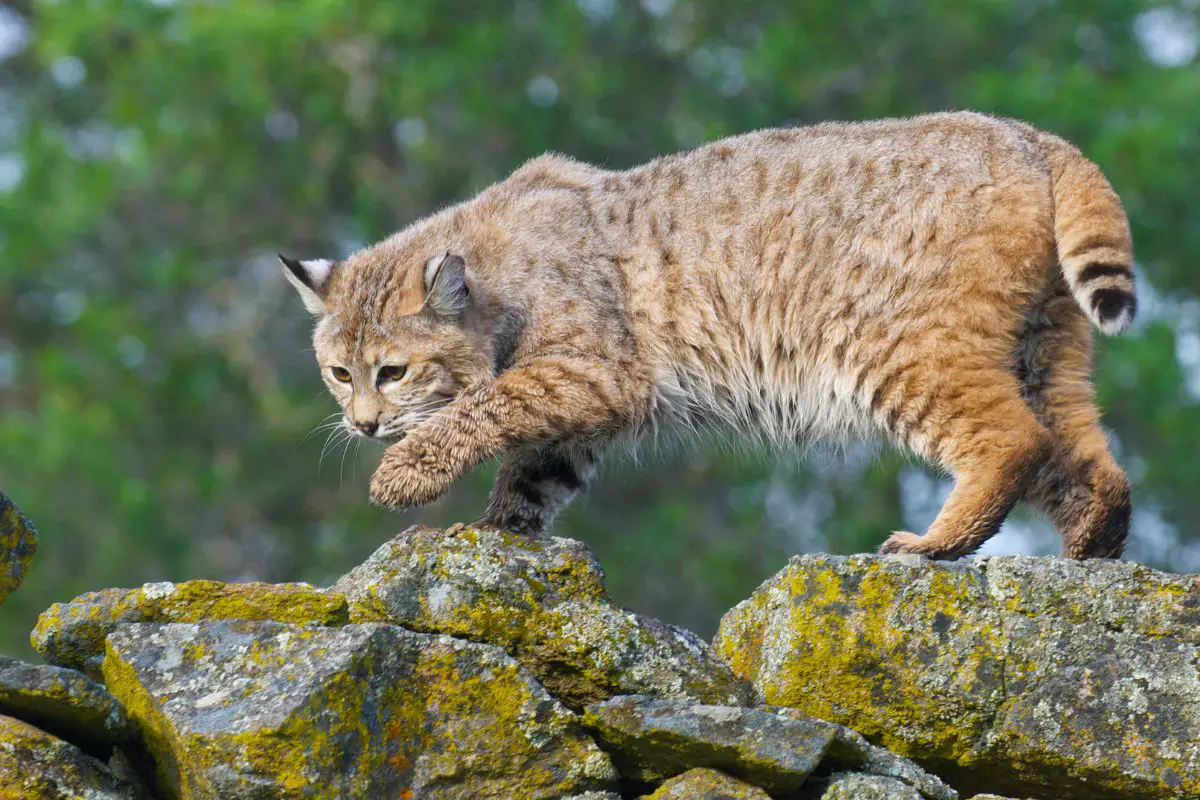
Offensive Capabilities
When it comes to the offensive capabilities of the bobcat and panther, both can be quite aggressive and fierce. This along with a number of key physical strengths makes them a threat to a wide range of animals.
Both species of cats typically have a strong bite and sharp retractable claws. Both species will use their powerful claws and teeth to tear into their prey.
They then have the bite force and muscular power to pin their prey down.
The main difference between the two is that panthers are bigger. Their bigger claws and teeth help them latch onto prey easier.
When it comes to ambushing prey, both have coats that help them camouflage effortlessly.
Predatory Behavior
Despite bobcats and panthers both preferring to ambush their prey with one fatal bite, the panther is a lot more aggressive.
Unlike the bobcat, the panther fears very little. Therefore, they will usually stalk their prey before thundering towards them at speed.
Once they reach their prey, they will leap at it before grabbing it around the neck.
The panther will then eat their prey there and then or drag them off to eat later. Super territorial, they will then defend their kill.
The bobcat also uses stealth to catch its prey, but it prefers to get a lot closer first.
The bobcat then relies more on killing its prey with one fatal bite. The bobcat will then quickly eat its kill to avoid other predators.
Tracks
Identifying big cat tracks isn’t easy. Therefore, it’s a good idea to know what to look for. Bobcat and panther tracks differ quite a lot.
Bobcat tracks resemble those of a small dog. The only real difference is a small notch in front of the heel pad.
A bobcat’s front feet are slightly bigger than its back feet. They are normally about 2 inches in diameter.
Panther tracks are usually 3 inches in diameter. The front feet feature a wider pad, whilst the back feet are more oval and narrow in shape. They have four toes that are teardrop shaped.
The most significant difference between the two is that the panther’s footprints are bigger.
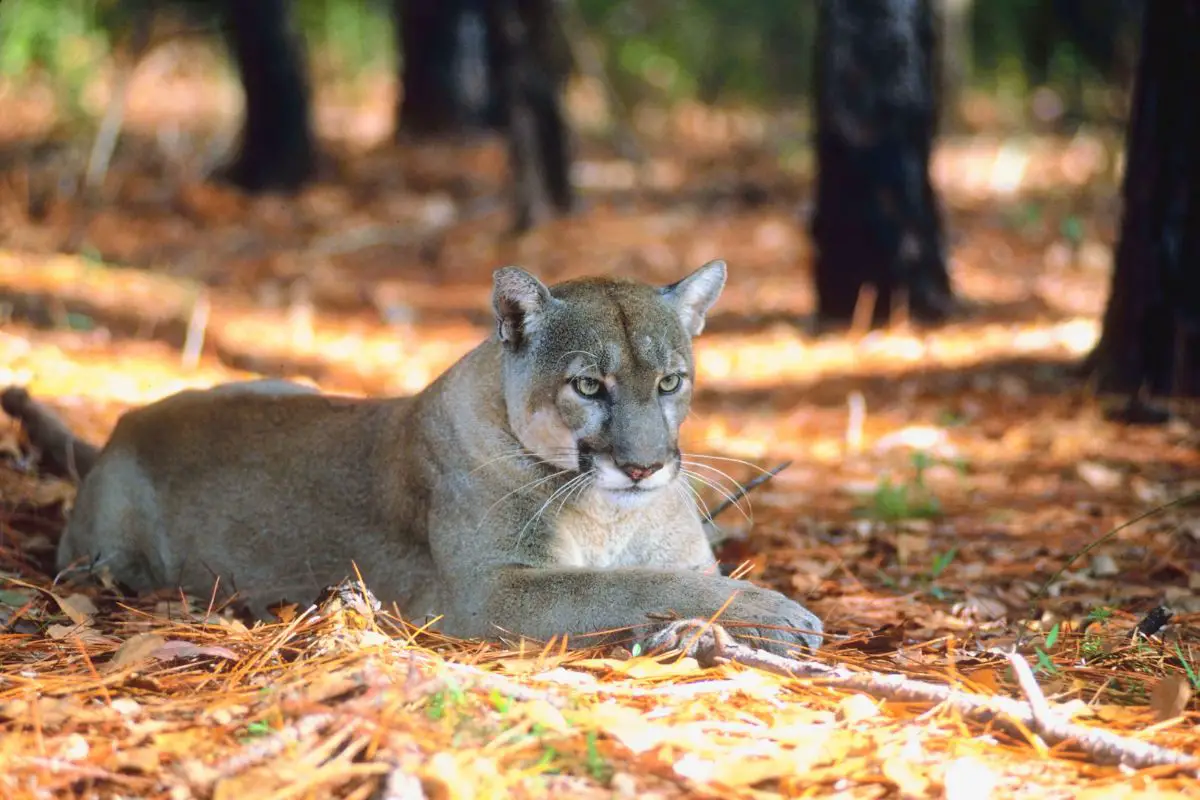
Length
It is when we start looking at factors like length that we really start to see the differences between bobcats and panthers. To put it simply, panthers are much bigger than bobcats.
A bobcat’s body can reach lengths of 26 to 41 inches long. Another 4 to 7 inches is added to that in the form of a short tail.
On the other hand, panthers have a body length of 48 to 108 inches. This is more than double that of the bobcat. ⅓ of the panther’s full length is its long tail.
Weight
The two species are also vastly different when it comes to weight. The bobcat only weighs between 11 and 30 lbs, while the panther weighs between 79 and 136 lbs. This is a significant difference.
Habitat
Bobcats are much better at adapting to different environments than the panther.
Living in a wide range of different habitats, the bobcat is most commonly found in deciduous and coniferous forests, swamps, desert edges, marshlands, and scrublands across North America, Canada, and Mexico.
Panthers are much more limited, mostly being found in tropical and deciduous forests.
They can also be found in grasslands and swampland. This limitation has seen the panther population drop in and around the Florida area.
Geographical Range
As a result of their ability to adapt to different habitats, bobcats have a much bigger range than panthers.
Bobcats can be found in Canada, North and West America, and Mexico. Some are even found in Alaska.
The panther once ranged throughout the southeastern U.S. They could be found as far west as Arkansas and as far north as South Carolina.
Today, only 120 to 230 adult panthers can be found. They primarily live in southwest Florida.
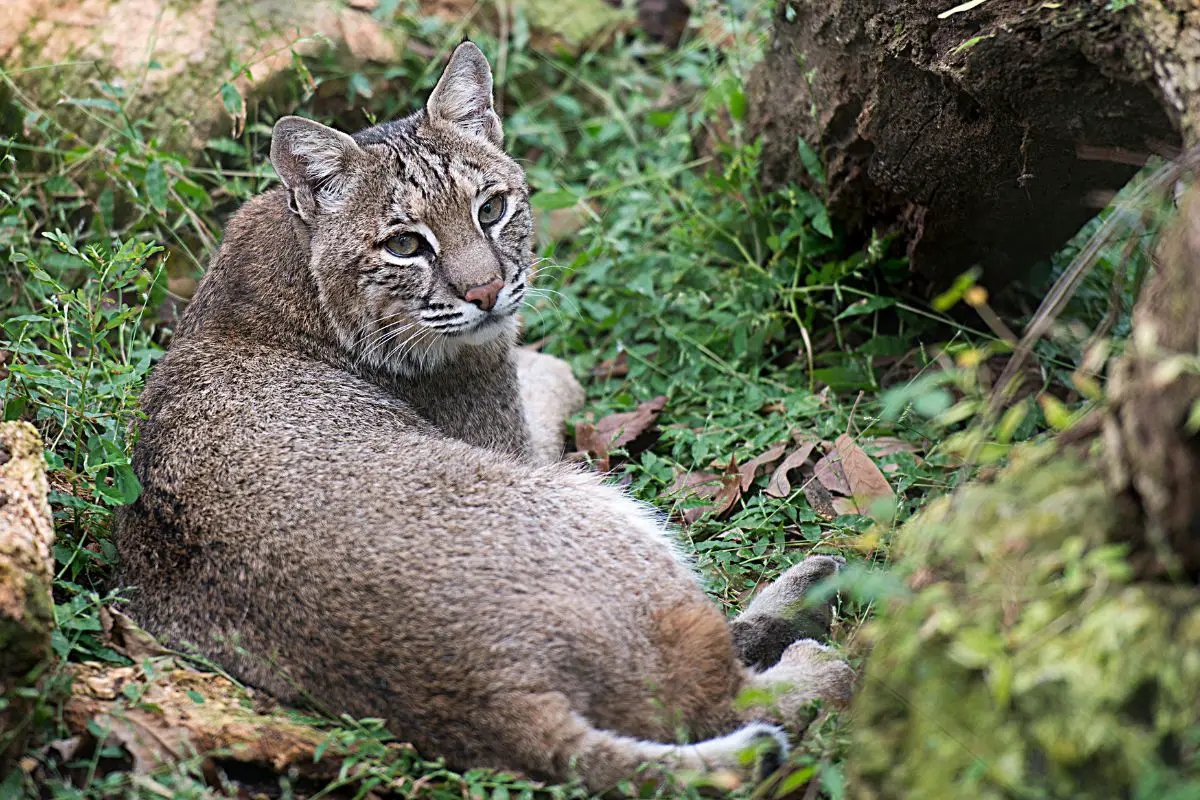
Body
Bobcats have long legs, large paws, a short tail, and tufted ears similar to that of the Canada Lynx.
Double the size of most household cats, the bobcat is brown or brownish red in color and features a white underbelly. Its short tail has a black tip.
Bobbed, it is this tail that gives the bobcat its name.
Panthers also have a brown, brownish-red body and long legs. However, the panther also has a long tail and body.
Unlike the bobcat, it doesn’t have tufted ears. Compared to the rest of its body, the panther’s head is small, but its jaw is strong.
Range
Despite its inability to adapt to as many habitats, the panther has a much bigger range than the bobcat.
A male panther could have a range of up to 400 miles, while a female might have a range of 50 to 100 miles.
A male bobcat might only have a range of 25 sq miles, and a female bobcat might only have a range of 6 sq miles. A bobcat is unlikely to ever leave its territory.
Legs And Feet
Both panthers and bobcats have long legs. Due to their size, the panthers are bigger.
A bobcat’s hind legs are longer than its front legs, giving it a “bobbing” gait.
Thanks to the strength of its legs, the bobcat can leap as high as 12 feet. For their size, they also have quite large paws.
These paws are approximately 1 ½ inches long and 1 ⅜ inches wide.
The strength panthers can generate in their legs give them the power to leap up to 20 feet high.
The panther’s hind legs are also slightly larger and longer than its front legs. Their paws are usually 3 inches long and 3 inches wide.
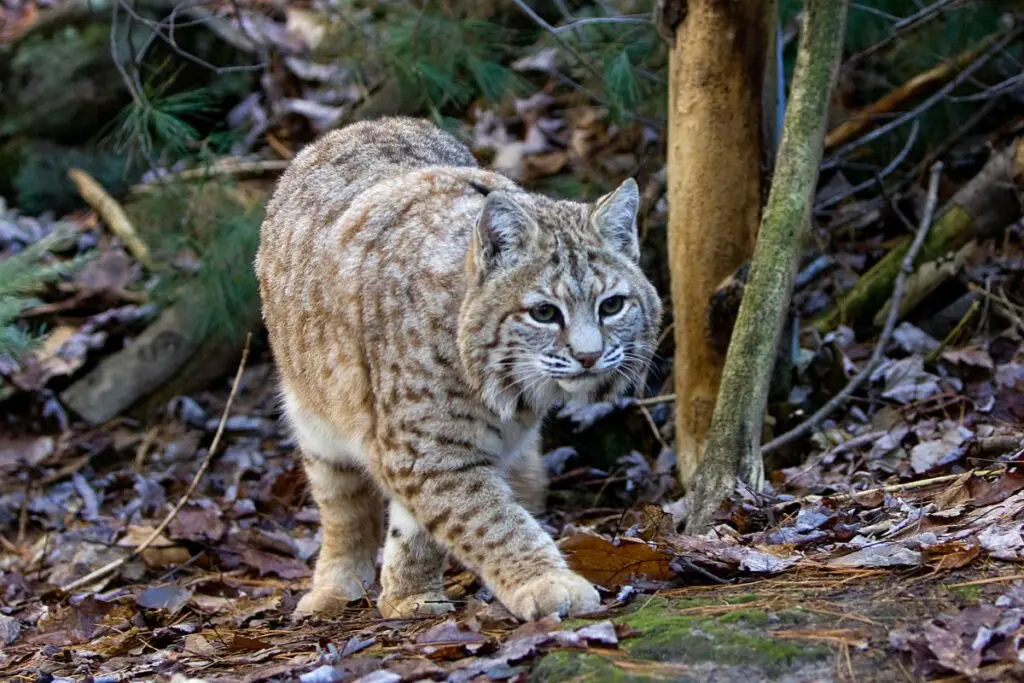
Fur Color And Patterns
Bobcats are identified by their thick, brown, or brownish red fur.
The fur on their stomach will usually be white and the tip of their tail will be black. They are usually spotted with grayish marks all over their body.
The panther also has brown-colored fur, but its hair tends to be a lot shorter and sleek. They also don’t have a white underbelly like the bobcat. Instead, their underbelly is grayer.
Black markings decorate their ears, tail, and snout.
Tails
We’ve already touched upon this briefly, but let’s look at it in more detail. Panthers have much longer, thicker tails than bobcats.
The panther’s tail can be up to ⅓ of its total length. Their tail is one of the largest of the big cat species.
Bobcats, on the other hand, have very small tails. The bobcat’s tail only reaches lengths of up to 7 inches.
Who Would Win In A Fight Between Bobcat And Panther?
If a panther and bobcat were to ever come face to face in a fight, we would have to back the panther. Its sheer size, speed, and power would overpower the bobcat quite easily.
The fact that panthers have been known to hunt bobcats tells us everything we need to know.
Final Thoughts
Despite being confused for each other on a regular basis, there is a wide range of factors that make the bobcat and panther different. The most obvious of these is the difference in size.
Panthers are much bigger than bobcats. In this article, we’ve shown you all the main differences between the two species. You should now know exactly what sets a panther and bobcat apart.
- Bengal Cat vs Wild Bengal Tiger: Complete Comparison 2025 - October 31, 2025
- Complete Wild Cat Spotting Guide for Hikers 2025 - October 31, 2025
- Lynx vs Bobcat: Complete Field Identification Guide 2025 - October 30, 2025

